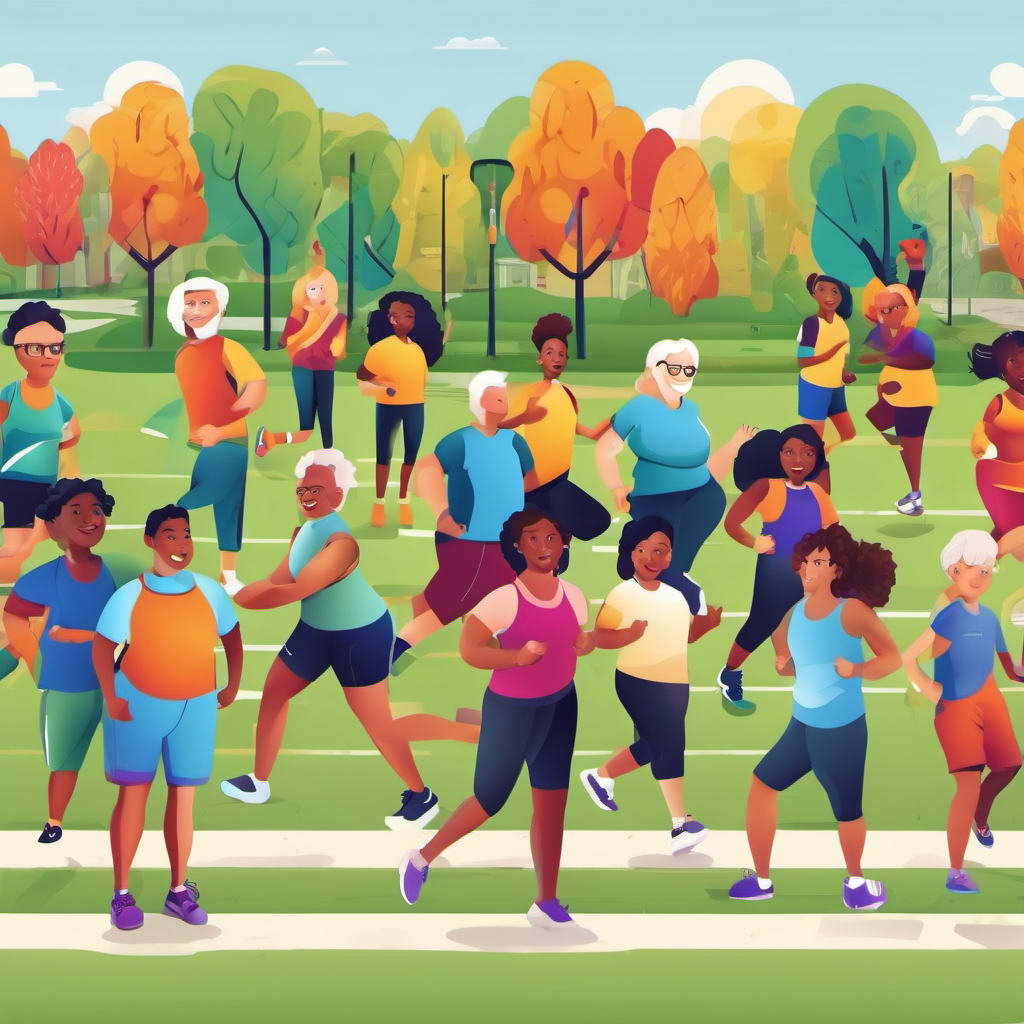The Secret Language of Sweat: Unraveling the Mystery of Exercise's Health Benefits
Sweat Science: Decoding the Health Benefits of Movement

The Secret Language of Sweat: Unraveling the Mystery of Exercise's Health Benefits
Imagine this: a conversation happening not between people, but between your organs. Muscles send messages to your heart, fat tissue talks to your blood, and all of this communication plays a crucial role in your health. This might sound like something out of science fiction, but it's the very concept that researchers are exploring in a groundbreaking study called MoTrPAC, the largest exercise study ever conducted.
For centuries, the importance of exercise for overall well-being has been known. Around 600 B.C., an Indian physician named Sushruta advocated for physical activity's health benefits. Fast forward to today, science confirms this ancient wisdom, revealing that lifelong exercise can make your body feel as much as 30 years younger. Despite this knowledge, our society is becoming increasingly sedentary. According to the U.S. Centers for Disease Control and Prevention, only 25% of adults in the U.S. meet the recommended weekly exercise guidelines. This lack of movement has alarming consequences, leading to a rise in medication use, obesity, chronic diseases, and a higher risk of complications from COVID-19.
The paradox remains: while we know exercise is good for us, the exact mechanisms behind its positive impact on conditions like diabetes, heart disease, Alzheimer's, and osteoporosis remain somewhat elusive. This is where MoTrPAC steps in.
The MoTrPAC Study: Unveiling the Cellular Conversation
The National Institutes of Health has invested a significant $170 million across 31 scientific laboratories to launch MoTrPAC, a comprehensive exploration of how exercise training impacts health at a cellular level. The study will follow and collect data from 1,700 participants who will engage in exercise throughout their lives. Here's the fascinating twist: researchers are particularly interested in discovering how our organs "talk" to each other.
Think of hormones – chemical messengers released by one organ that influence another. For example, adrenaline from the adrenal glands increases your heart rate. Similarly, MoTrPAC will investigate how exercise affects communication between muscle, blood, and fat tissue in humans and animals. Understanding this "crosstalk" between organs holds immense potential for unlocking the full benefits of exercise and developing new strategies to fight various diseases.
Beyond the Sticker Price: Investing in a Healthier Future
While the $170 million price tag might seem hefty, consider the alternative: the colossal cost of a sedentary society. By learning how exercise works on a cellular level, medical professionals can confidently prescribe exercise as a form of "medicine." This shift has the potential to alleviate the financial burden on healthcare systems, ultimately saving taxpayer money in the long run. Imagine a world where exercise isn't just a recommendation, but a targeted treatment for specific ailments.
The results of MoTrPAC are highly anticipated, holding the potential to shed light on what Sushruta intuitively understood millennia ago: exercise is a vital pillar of a healthy life. By deciphering the "secret language of sweat," this study can revolutionize our understanding of movement and guide us towards a future where exercise not only makes us feel younger but also empowers us to fight a multitude of diseases.
Moving Beyond Knowledge: Examples of Exercise Programs for All
Understanding the benefits of exercise is crucial, but translating knowledge into action can be a challenge. Here are some examples of exercise programs suitable for different fitness levels to get you started:
Beginner:
- Brisk Walking: This low-impact activity requires minimal equipment and can be done almost anywhere. Aim for 30 minutes most days of the week. You can gradually increase the duration and intensity as you get fitter.
- Bodyweight Exercises: Exercises like squats, lunges, push-ups (modified versions can be done on your knees), and planks require no equipment and can be done at home. Start with 2-3 sets of 10-12 repetitions and gradually increase the difficulty as you build strength.
- Yoga or Tai Chi: These mind-body practices combine gentle movement, stretching, and breathing exercises. They are a great way to improve flexibility, balance, and mindfulness, all while getting some exercise.
Intermediate:
- Running or Cycling: These activities provide a more vigorous workout than walking. If you're new to running, consider a couch-to-5K program to gradually build your endurance. Cycling is a low-impact option that's easy on the joints.
- Strength Training: Using dumbbells, resistance bands, or your own bodyweight, strength training helps build muscle, which improves metabolism and overall fitness. Aim for 2-3 sessions per week, targeting all major muscle groups.
- Group Fitness Classes: Consider joining a group fitness class like Zumba, HIIT (High-Intensity Interval Training), or bootcamp.Group fitness classes offer a fun and social way to get your workout in. These classes can be a great motivator for those who struggle to exercise alone and often provide modifications for different fitness levels. Remember, consistency is key, so find an activity you enjoy and that fits into your schedule. Don't be afraid to start slow and gradually increase the intensity and duration of your workouts as you get fitter. Listen to your body, take rest days when needed, and consult a healthcare professional before starting any new exercise program, especially if you have any underlying health conditions.
By incorporating these examples into your routine, you can take advantage of the numerous benefits exercise offers, not just on a cellular level as MoTrPAC is exploring, but also on your overall well-being. Remember, even small amounts of physical activity are better than none. So, lace up your shoes, grab your yoga mat, or join a fitness class – your body (and your organs) will thank you for it!
About the Creator
suren arju
Hi there! I'm Suren, your startup guide. Entrepreneur, writer, dreamer - I share insights, tips & stories to fuel your startup journey. Ready to explore, learn & win together? Join me & let's redefine how we launch, learn & leap!
Enjoyed the story? Support the Creator.
Subscribe for free to receive all their stories in your feed. You could also pledge your support or give them a one-off tip, letting them know you appreciate their work.





Comments
There are no comments for this story
Be the first to respond and start the conversation.